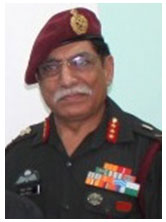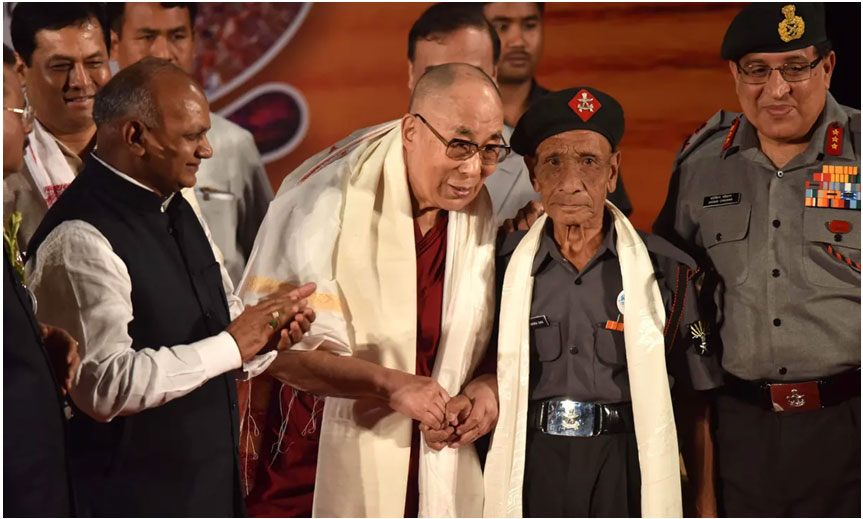Proposal to Merge Assam Rifles With ITBP Defies All Logic
Cabinet to Take a Call on Assam Rifles - ITBP Merger
Lt Gen Vinod Bhatia, PVSM, AVSM, SM

Lt Gen Vinod Bhatia is Director CENJOWS, Former DGMO and Commandant Assam Rifles Battalion
Reportedly the Ministry of Home Affairs (MHA) is determined to merge the Assam Rifles with the Indo Tibetan Border Police (ITBP). The proposal is not new, with the MHA trying to wrest operational control of Assam Rifles from the Army for many years. However, what is new is the merger of Assam rifles with ITBP. Having failed to gain total control of Assam Rifles - the only Para Military Force (PMF) of India - the MHA has rolled out a fresh and more dangerous proposal of merging the Assam Rifles, which in effect implies disbanding it to enable it to gain control. The ITBP is a Central Armed Police Force (CAPF) directly under the MHA, whereas Assam Rifles is a PMF, though funded by the MHA and it functions under the operational control of the Army to ensure a synergised approach to counter-insurgency in the North Eastern states.
Assam Rifles was raised by the British in 1835 as a PMF called the Cachar Levy. Since then, the Assam Rifles has undergone a number of name changes—the Assam Frontier Police (1883), the Assam Military Police (1891) and Eastern Bengal & Assam Military Police (1913), before finally becoming the Assam Rifles in 1917. Over the course of its history, Assam Rifles and its predecessor units have served in a number of roles, conflicts and theatres including World War I, where they fought in Europe and West Asia and in World War II, where they served mainly in Burma and defended the North Eastern states of Manipur and Nagaland from Japanese Invasion including the famous battles of Kohima and Imphal. In the post World War II period, Assam Rifles has expanded greatly as did its role. There are currently 46 battalions of Assam Rifles with a sanctioned strength of 63,747 personnel.
Assam Rifles are by far the most combat rich, battle hardened force deployed in the turbulent and troubled North East of the country. The remote North Eastern states are some of the most challenging areas for the forces with festering insurgencies since 1956. Assam Rifles have proved their effectiveness in all domains - countering insurgencies, border guarding, development and integration of the remote areas and people. Their contributions to the nation and security have also been beyond the North East, in Sri Lanka - Operation Pawan as also Jammu & Kashmir (J&K) - Operation Rakshak. The Force is an essential and integral resource available to the nation and the Army during warlike situations, wherein they are responsible for Rear Area Security of the lines of communications. Assam Rifles units are also trained and tasked to relieve Army units deployed in counter-insurgency/ counter-terrorist grid in times of war and conflict. Assam Rifles have also made major contributions during the 1962 Chinese invasion, which also includes assisting the escape and reception of Dalai Lama to India. Dalai Lama was first received by Rifleman Naren Chandra Das of Assam Rifles in a top secret mission. Nearly 60 years later, in April 2017, Das was reunited with the Dalai Lama in an emotional ceremony that recalled the Buddhist leader’s escape from Tibet after a failed uprising against Chinese authorities.
Assam Rifles popularly known as the’ Sentinels of The East’ and ‘Friends of The Hill People’ have nearly two centuries of history and investment in gaining the respect and confidence of the people of North East. The domain knowledge of the lingua franca, expertise, operational effectiveness and empathy for the people are unmatched.
15 Assam Rifles battalions are deployed in border-guarding role with the remainder 31 battalions in counter-insurgency role in Nagaland, Manipur, Arunachal Pradesh, Assam and Tripura. The advantage of having one force in border-guarding and CI are obvious as there is total integration, ease of command and control, a turnover of units and congruence of operational roles. Assam Rifles need to be given due credit for the many contributions to the final and peaceful resolution of Mizo insurgency, the 2015 Naga Peace Accord as also ensuring sub critical violence levels in Manipur and Assam. This can be directly attributed to the synergy achieved, wherein the operational control and leadership of the Assam Rifles is with the Army.
The report of the Group of Ministers (GOM) on National Security after the Kargil conflict, identified the various problems of border management. Para 5.1 of the report categorically states "Multiplicity of forces on the same borders has inevitably led to the lack of accountability as well as problems of command and control." The major problem identified by the GOM, vide para 5.12 recommends " At present there are instances of more than one force working on the same border and questions of conflict in command and control have been raised frequently. Multiplicity of forces on the same border has also led to lack of accountability on the part of the forces. To enforce the accountability, the principle of ‘’ONE BORDER ONE FORCE” may be adopted while considering deployment of forces at the border."
In 2002, based on the GOM report, the Assam Rifles were nominated as the border-guarding force for the India-Myanmar border, a role which the force had performed effectively for many years. The recommendations of the GOM have been implemented along all our borders with neighbouring countries except the most sensitive and important border with China, where the Army and ITBP continue to man the 3488 km long sensitive and disputed borders. The Army reports and is responsible to the Ministry of Defence (MoD), whereas the ITBP reports directly to the MHA. This dual command and control structure leads to conflicting directions and guidelines emanating from the two controlling ministries, ie, MHA and MoD and intermediary HQs. The essential cooperation and coordination between the two forces is dependent mostly on the personalities of the commanders functioning conjointly. Unlike the Line of Control (LoC) in J&K, where the BSF battalions deployed on the LoC function under operational control of the Army, the ITBP along the India-China border does not function under the Army, creating avoidable issues. The government, instead of synergising border management, is creating additional issues of coordination by proposing to merge Assam Rifles with ITBP.
MHA is responsible for border-guarding of the country’s 15106.7 kms long borders. The MHA, in 2102-2013 had proposed the border-guarding of the 1643 km long India-Myanmar border to be taken over by BSF with raising of additional 43 battalions. The envisaged management of the border and deployment was similar to the India-Bangladesh border by constructing Border Out Posts (BOPs) as also constructing a fence along the border. The 43 BSF battalions were to replace the existing 15 Assam Rifles battalions. This would have created avoidable operational and coordination issues as the border-guarding forces and the counter-insurgency forces need to be under a single commander. In addition, this is not a cost effective option. The India-Myanmar border has another peculiarity other than the densely forested hilly terrain with little road connectivity - there is a Free Move Regime, which permits the people residing on either side of the borders to move freely across the borders upto a distance of 16 km. Hence, the merger of Assam Rifles with ITBP will be detrimental to both border management of India-Myanmar border as also the improving security situation in Assam, Manipur, Nagaland, Arunachal Pradesh and Tripura.
The ITBP, a force raised on 24 October 1962, as a knee jerk reaction to the Chinese aggression, is undoubtedly one of the most hardened, experienced and effective CAPF. The 45-battalion strong ITBP is mandated to " Maintain vigil on the Northern Borders (China), detection and prevention of border violations and promotion of the sense of security among the local populace." The experienced Himveers need to remain focused on their core competencies of high altitude policing duties and border-guarding in concert with Army and augmenting the border defences, when required. Irrespective of the much needed raising of nine additional battalions and establishing 54 posts, the ITBP lacks the resources, wherewithal and structures to manage the borders on its own and deal with the People’s Liberation Army (PLA) on equal terms. Invariably, the Army, given its mandate to defend the borders, assumes responsibility and is accountable to the nation. The thin line between border-guarding (ITBP) and border defence (Army) is near impossible to define along our disputed borders with China, as responsibilities overlap. A similar situation along the India-Myanmar border will create needless challenges and management issues with dual control, adversely impacting the improving security situation in the North East.
The Modi Government has demonstrated an unprecedented will, rationale and urgency to take hard decisions with regard to national security. The surgical strikes post-Uri and against the NSCN (K), the Balakote air strikes, the Dokalm intrusion by China, abrogating the provisions of Article 370 and 35A in J&K and the long overdue defence appointment of the Chief of Defence Staff (CDS) are among a few. What the government needs to do is streamline the command and control structure and place the ITBP under operational control of the Army along the India-China border to ensure a more effective management of the Line of Actual Control (LAC). This will, to a large extent obviate any inadvertent flare up along the LAC as transgressions by China increase. The reported proposal to merge Assam Rifles with ITBP defies operational, financial and strategic logic and if implemented will be detrimental to the security situation in the North East. The people of the North East not only relate to the Assam Rifles as their own but also hold them in the highest respect and regard for their many contributions and connect with the people. The present role and contributions of Assam Rifles in both border-guarding and counter-insurgency and counter-terrorism needs to be appreciated and reinforced. The existing structure and operational control with the Army is an imperative for a peaceful North East and a tranquil India-Myanmar border.


